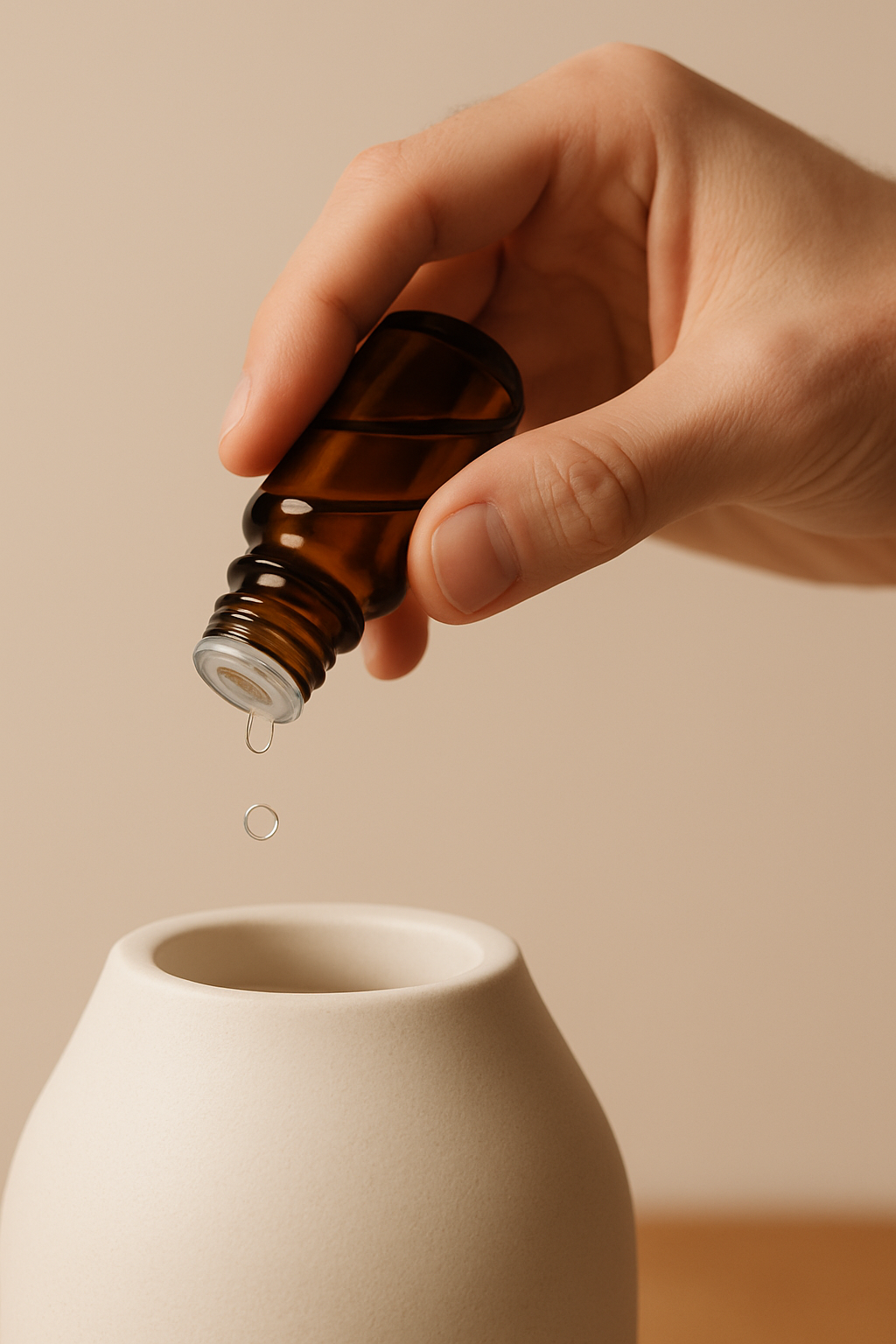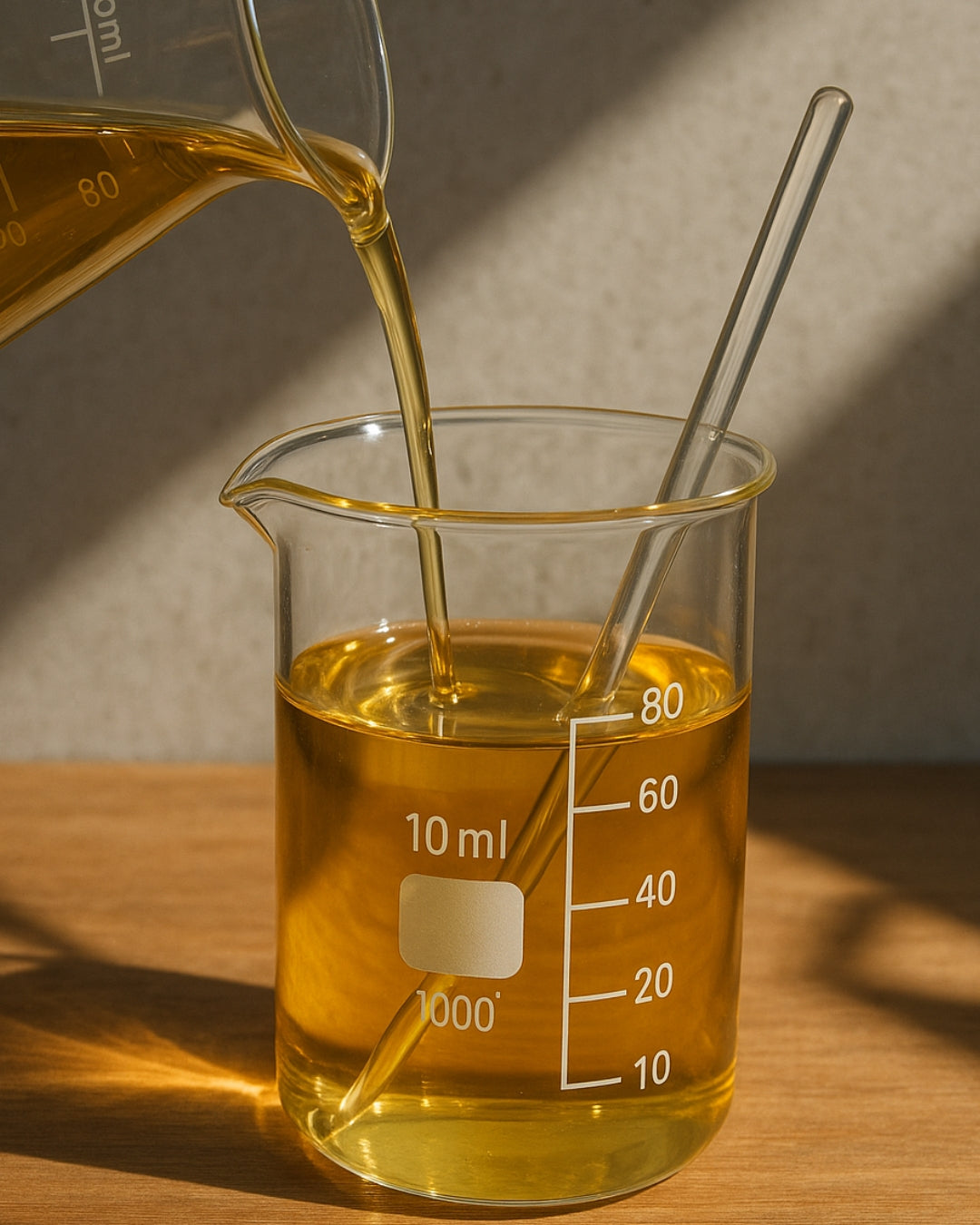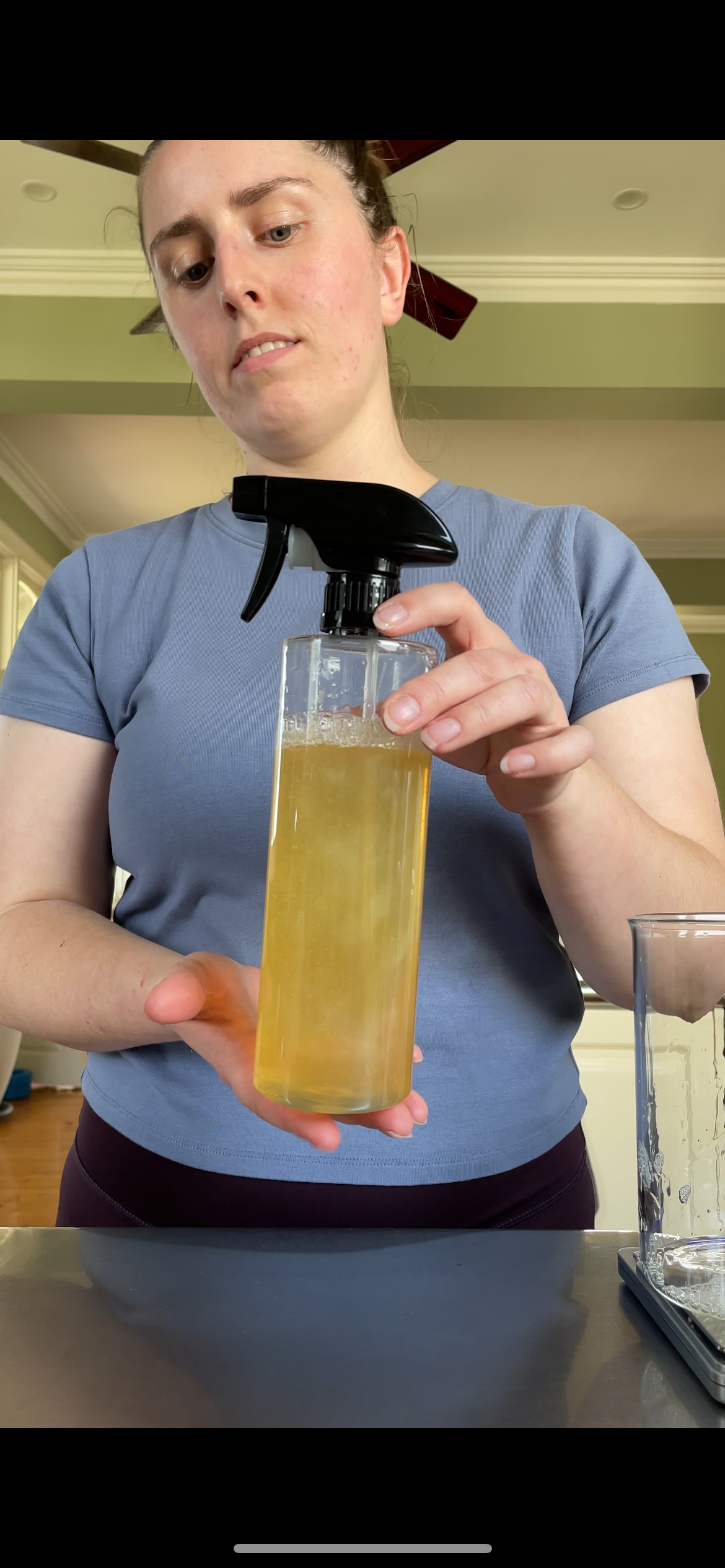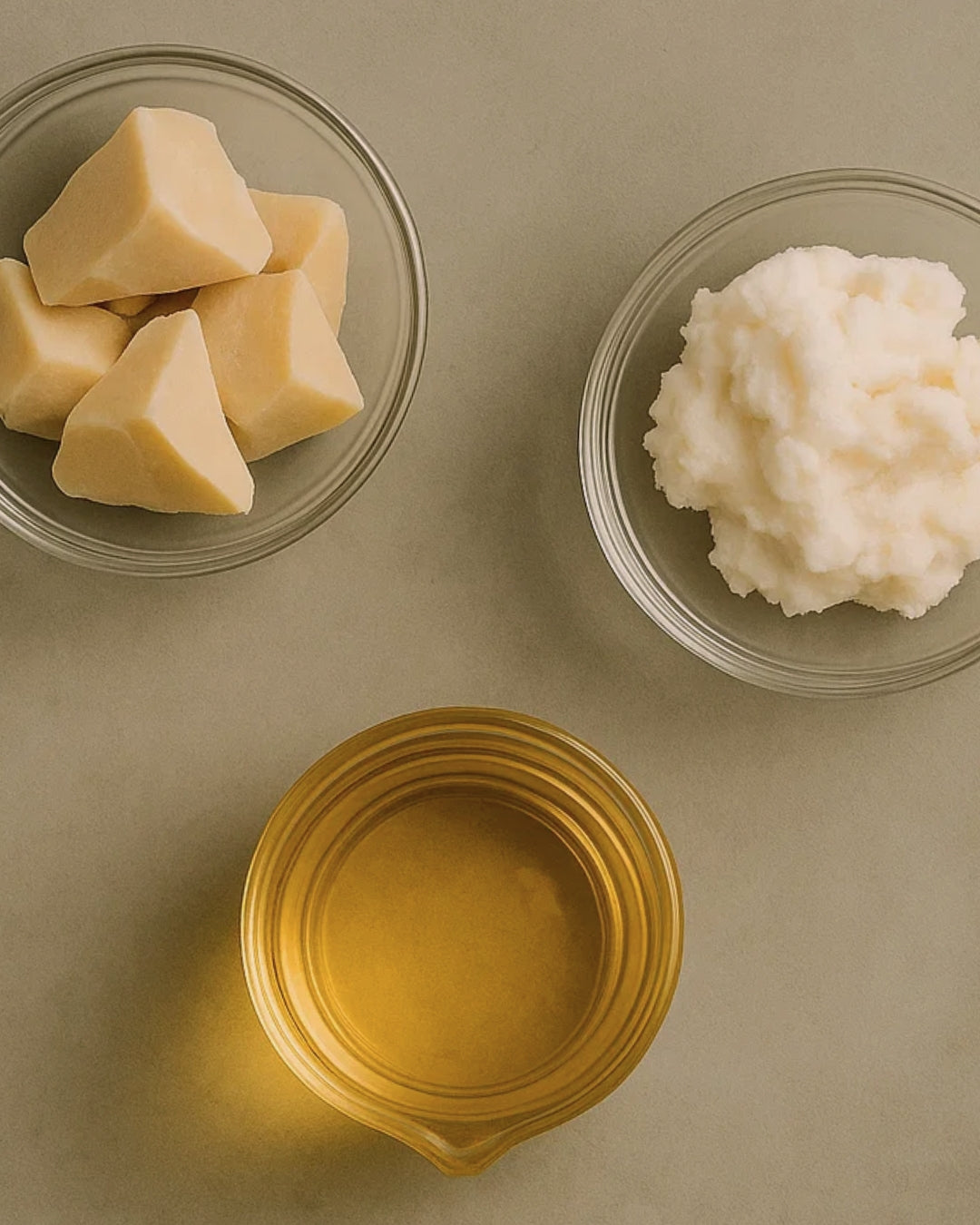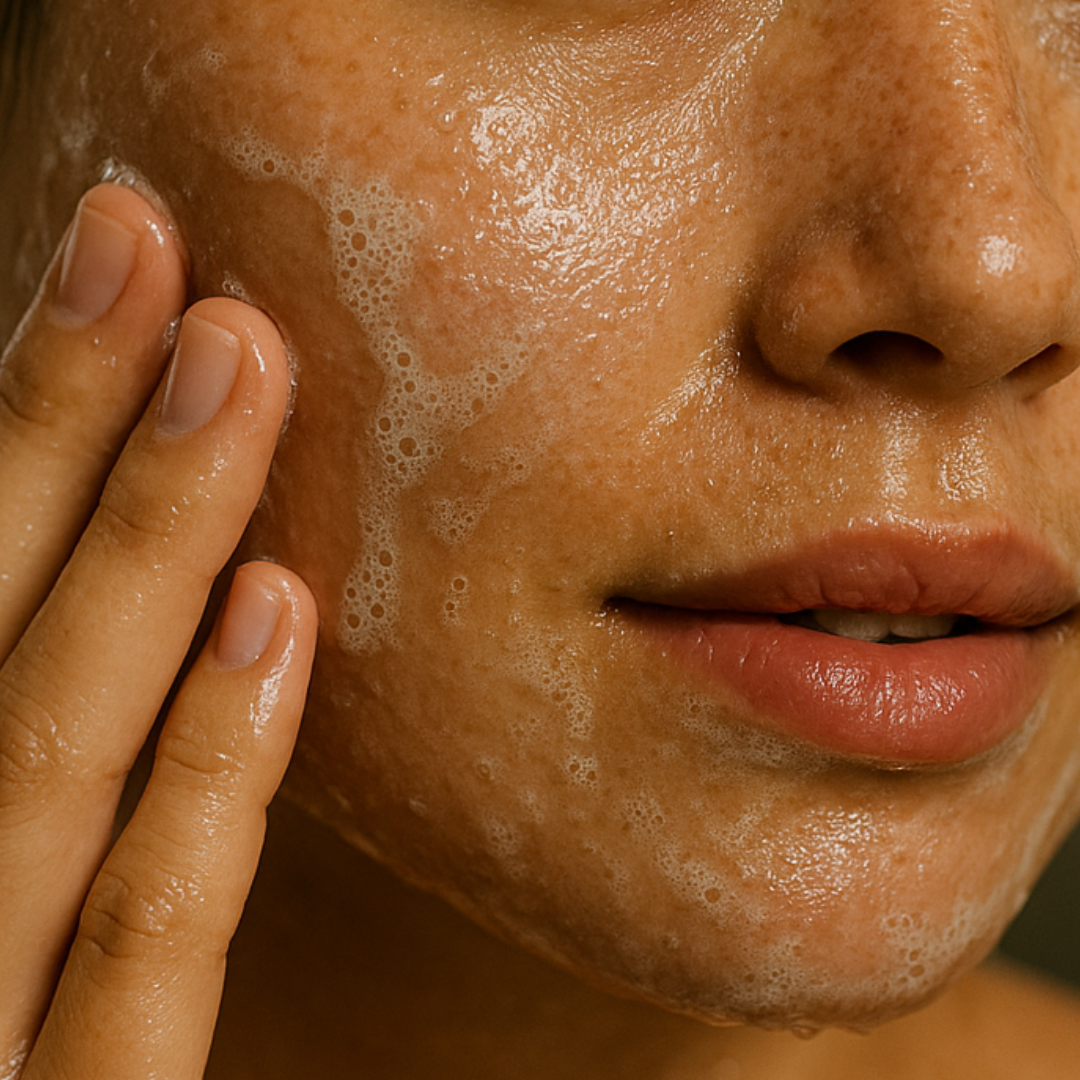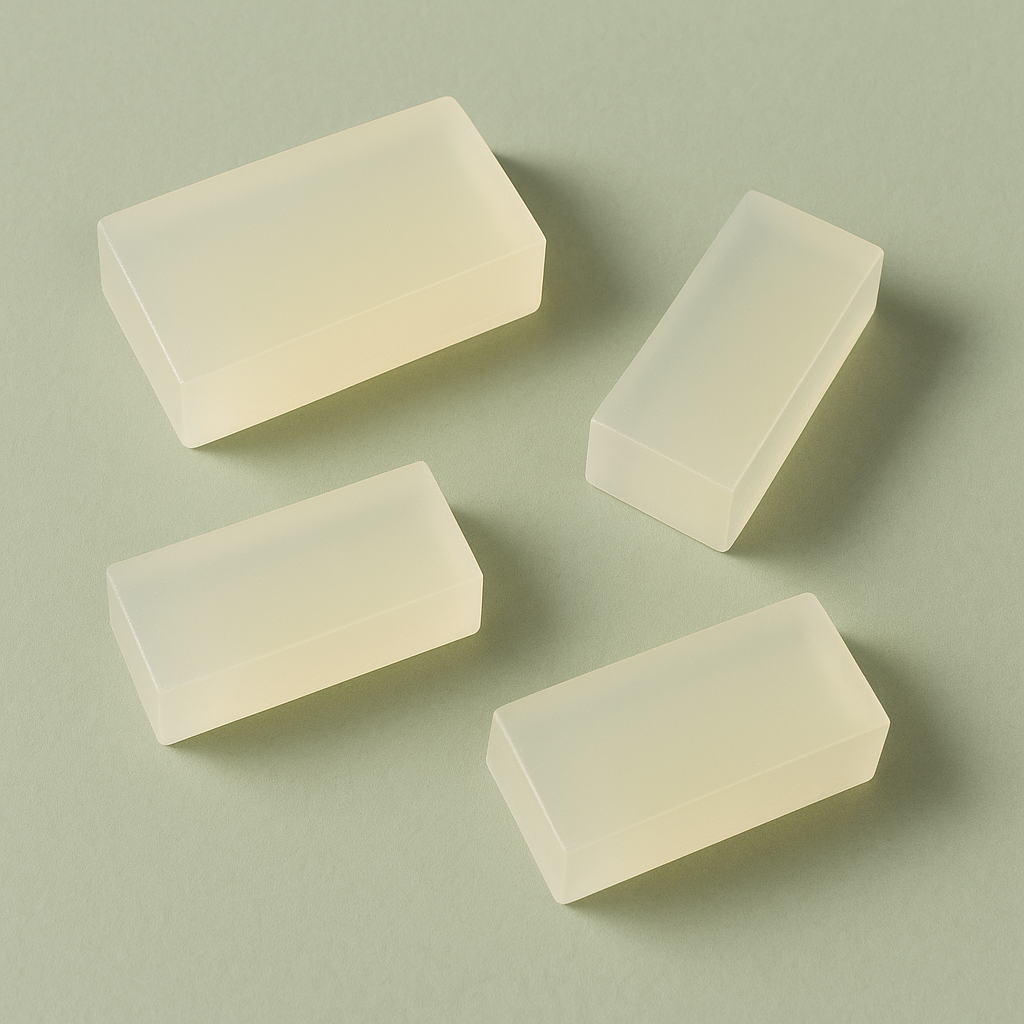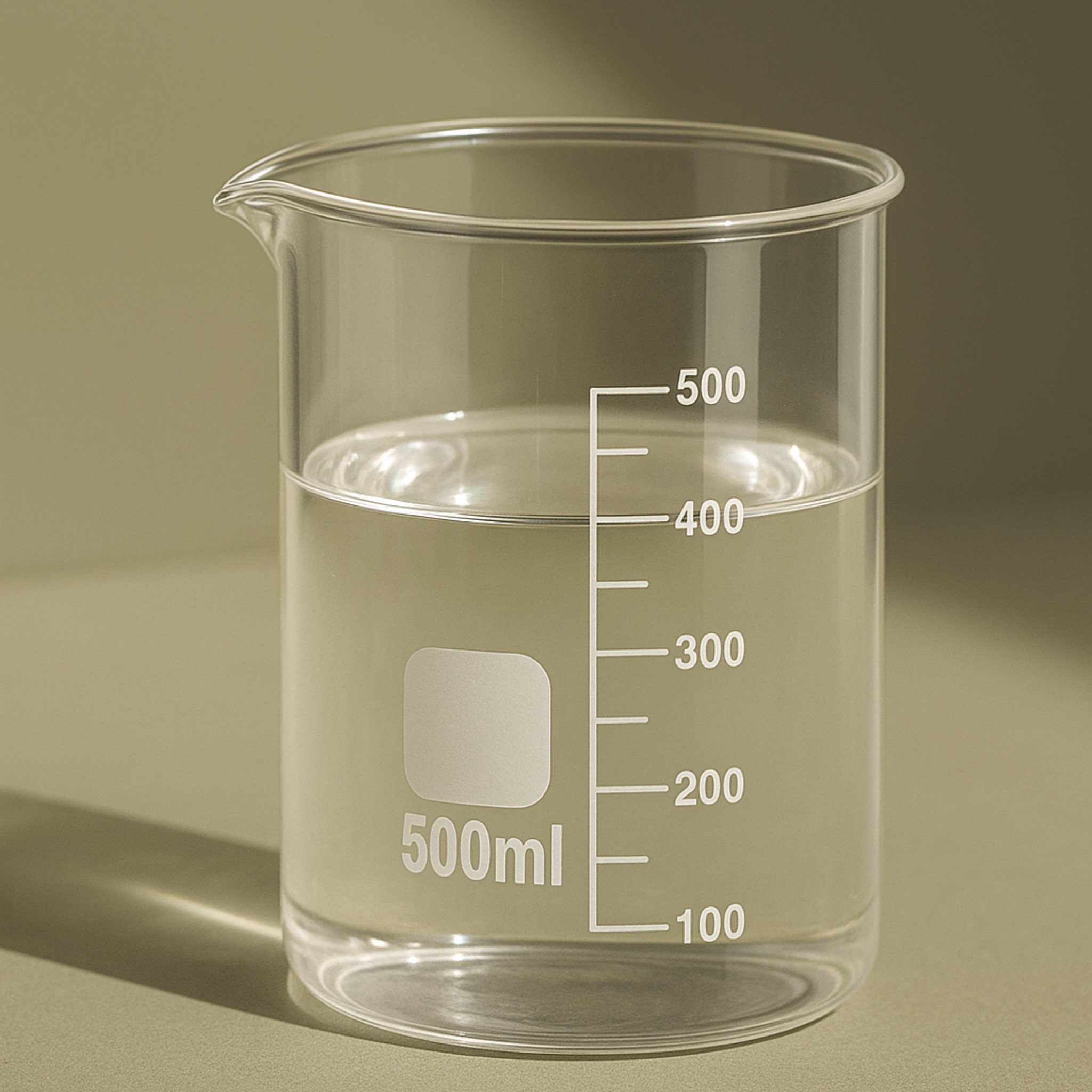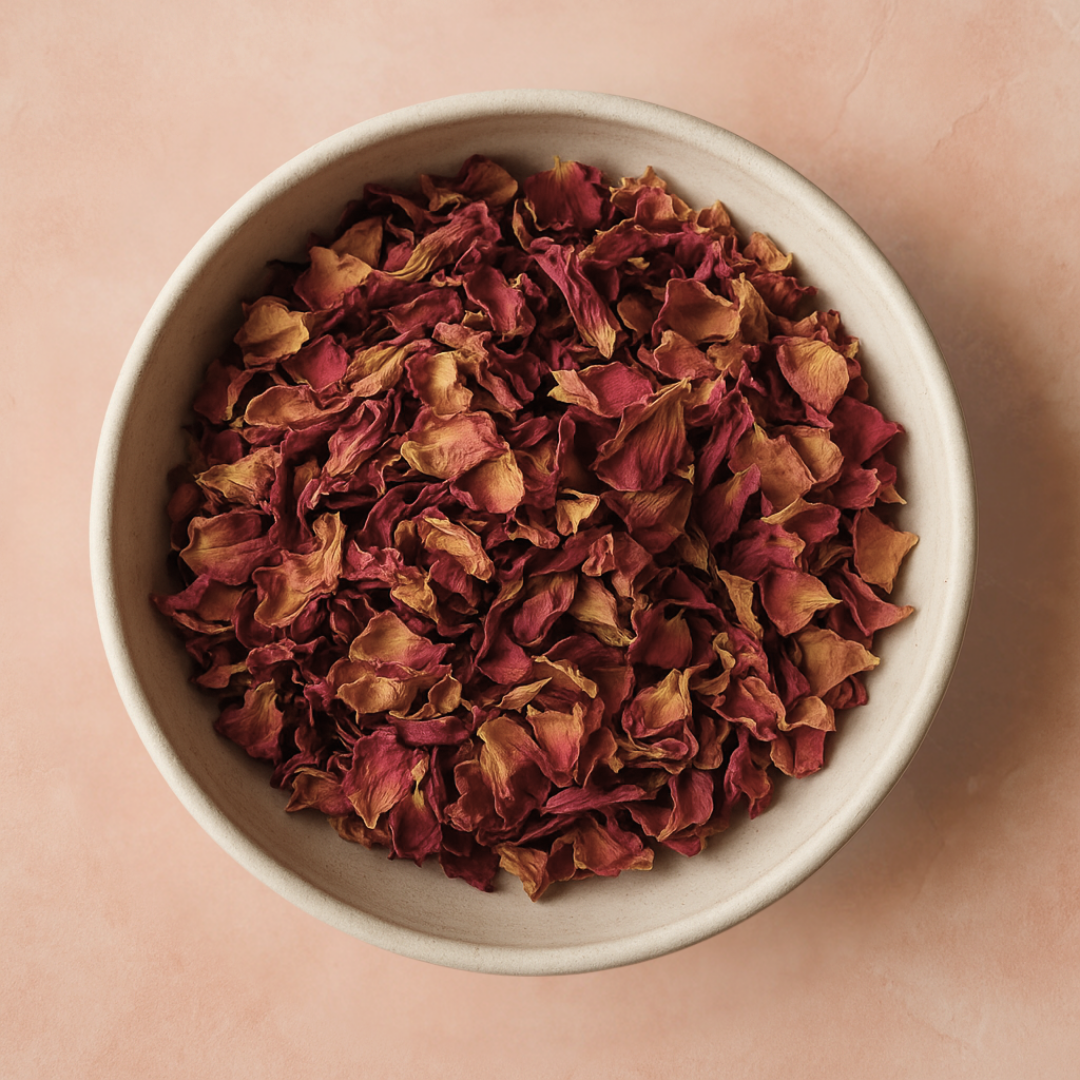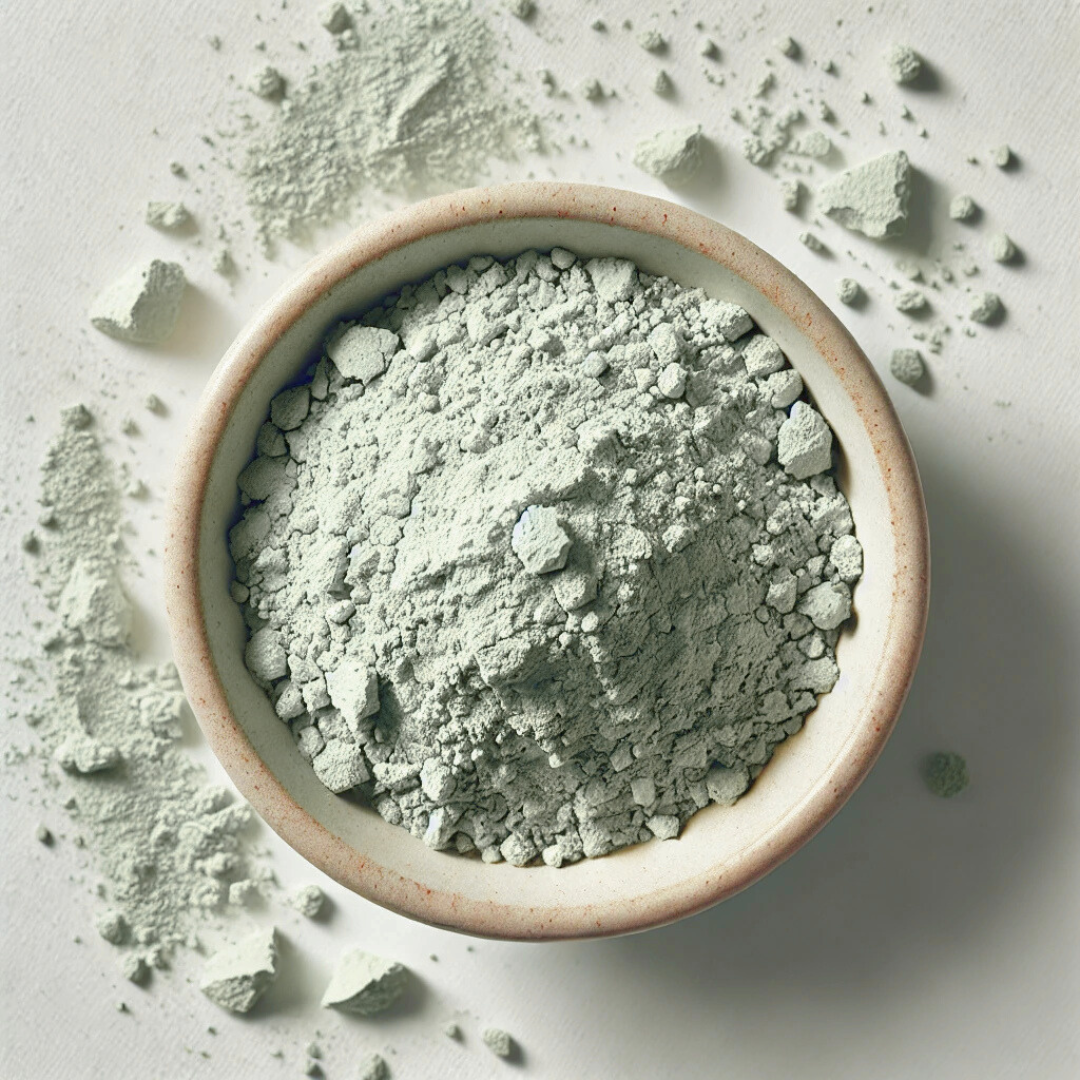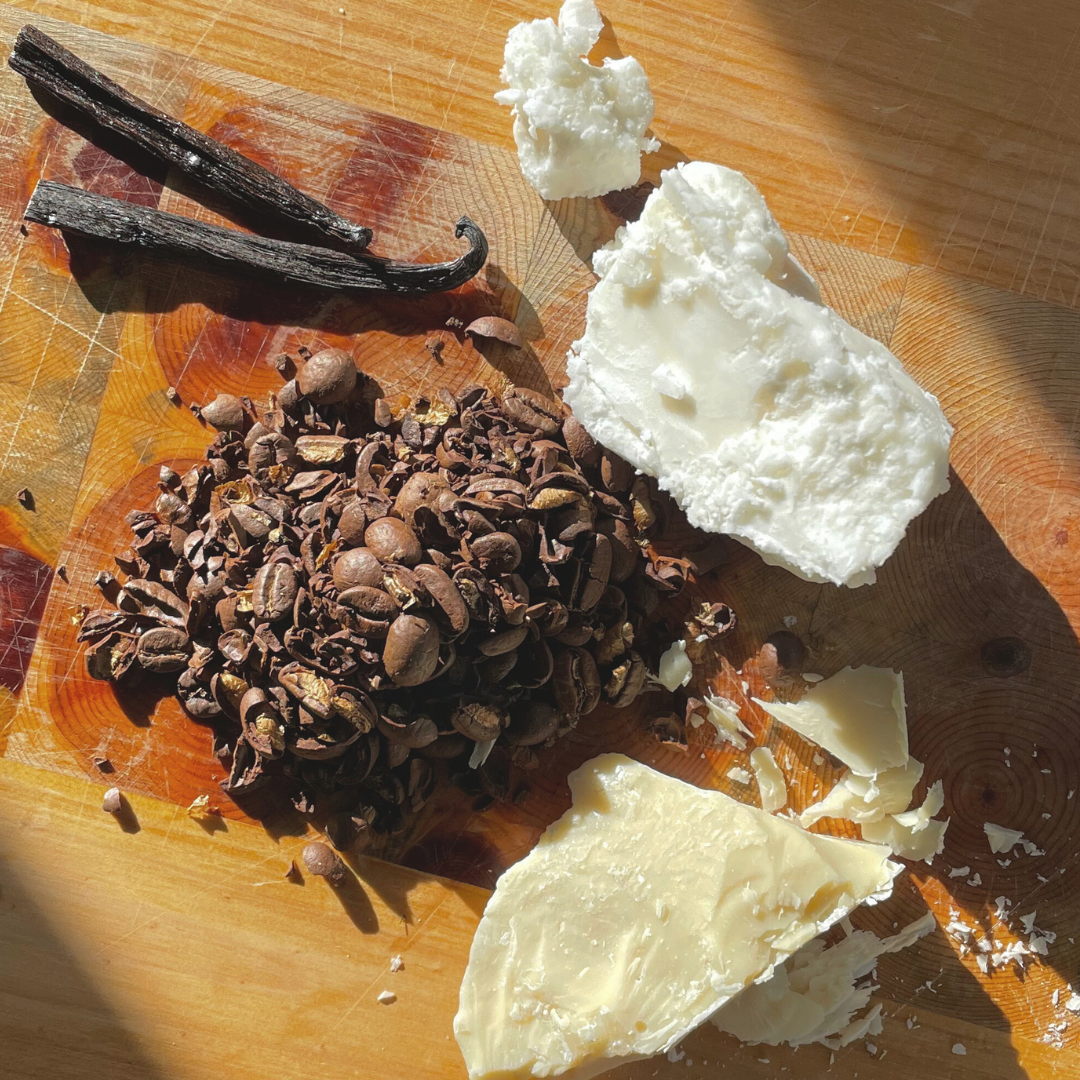15 minute read
Winter transforms your skin's needs completely. Cold air holds less moisture, while indoor heating systems strip away what little humidity remains, leaving skin feeling tight, rough, and uncomfortably dry. Your skin's protective barrier – that delicate layer of lipids and cells – begins to crack under pressure, leading to increased sensitivity, irritation, and that dreaded winter itch that no amount of regular moisturizer seems to fix.
This is where carrier oils become your formulation superheroes. Unlike simple moisturizers that sit on the surface, these plant-derived oils work as emollients, diving deep into the spaces between skin cells to repair and restore your natural barrier. The right carrier oil doesn't just moisturize – it delivers essential fatty acids that match your skin's own lipid structure, along with vitamins and antioxidants that help heal winter damage while protecting against future environmental stress.
The Top 5 Winter Carrier Oils for Skin Repair
1. Jojoba Oil (Simmondsia Chinensis Seed Oil):

Technically a liquid wax rather than a true oil, jojoba's unique molecular structure makes it the gold standard for winter formulations. Its long-chain monounsaturated fatty acids closely mimic human sebum, allowing for exceptional skin compatibility and absorption. The high concentration of eicosenoic acid provides deep moisturization without comedogenic properties.
Lipid Composition & What It Means:
-
Eicosenoic Acid (C20:1): 65-75% - These long-chain fatty acids create a protective film that mimics your skin's natural sebum
-
Docosenoic Acid (C22:1): 18-25% - Works alongside eicosenoic acid for superior skin barrier function
-
Oleic Acid (C18:1): 5-12% - Enhances penetration and helps other ingredients absorb deeper
-
Palmitic Acid (C16:0): 1-3% - Provides structure and stability to the skin barrier
Key Phytochemicals & Their Actions:
-
Vitamin E (tocopherols) - Protects against free radical damage from winter environmental stress
-
Sterols (cholesterol, campesterol) - Help repair and strengthen the lipid barrier
-
Squalene - Lightweight moisturizer that won't clog pores
Formulation Properties:
-
INCI Name: Simmondsia Chinensis (Jojoba) Seed Oil
-
Viscosity: Medium-light (7-14 cP at 25°C)
-
Absorption: Rapid, non-greasy finish
-
Odor: Virtually odorless to mild nutty scent
-
Oxidative Stability: Excellent (naturally resistant to rancidity)
-
Comedogenic Rating: 0-1 (non-comedogenic)
Winter Benefits: Jojoba's stability makes it ideal for extended-wear winter formulations. Its ability to regulate sebum production helps balance skin that fluctuates between oily and dry during seasonal transitions. The natural antioxidants provide protection against environmental stressors common in Australian winters.
Formulation Tips: Use at 5-30% in serums and face oils, up to 100% as a standalone treatment. Excellent base for essential oil dilutions due to its stability and skin affinity.
2. Sesame Oil (Sesamum Indicum Seed Oil)

Sesame oil has been used for centuries in Ayurveda for its deeply nourishing and warming qualities—perfect for the colder months. Rich in oleic and linoleic acids, sesame oil acts as a dual-action emollient that not only helps soften the skin but may also support barrier repair, making it a great choice for winter body oils and facial blends. Its warming nature and thicker texture help lock in moisture and protect against cold, dry air.
Lipid Composition & What It Means:
-
Oleic Acid (C18:1): 35-45% – Supports deep penetration and helps repair dry, flaky skin
-
Linoleic Acid (C18:2): 35-50% – Essential omega-6 that may support barrier function and help soothe irritation
-
Palmitic Acid (C16:0): 8-12% – Contributes to skin protection and texture stability
-
Stearic Acid (C18:0): 3-6% – Adds a protective layer and may help reduce trans-epidermal water loss
Key Phytochemicals & Their Actions:
-
Sesamol & Sesamin (Lignans) – Natural antioxidants that may protect skin from oxidative damage
-
Tocopherols (Vitamin E) – Support skin repair and provide antioxidant defense against environmental stressors
-
Phytosterols – Help soothe the skin and reinforce the lipid barrier
-
Copper, Zinc, Magnesium (Trace minerals) – May support skin regeneration and resilience
Formulation Properties:
-
INCI Name: Sesamum Indicum Seed Oil
-
Viscosity: Medium to rich (35-50 cP at 25°C)
-
Absorption: Slow, leaves a light occlusive film
-
Odor: Mildly nutty, slightly earthy
-
Oxidative Stability: Moderate (contains natural antioxidants but still benefits from added protection)
-
Comedogenic Rating: 1-2 (generally well-tolerated, but test for acne-prone skin)
Winter Benefits:
Sesame oil’s warming nature and emollient-rich profile make it ideal for cold-weather skin care. It may help reinforce the lipid barrier, support hydration retention, and protect skin against dry wind and environmental stress. Especially useful for mature, dry, or vata-type skin that becomes more sensitive and depleted in winter.
Formulation Tips:
Best used in body oils, balms, and nourishing facial serums at 10-30% concentration. For facial formulations, blend with faster-absorbing oils (like rosehip or jojoba) to reduce residue. Combine with rosemary antioxidant or tocopherol to improve shelf life. Keep away from direct sunlight and store in a cool place.
3. Avocado Oil (Persea Gratissima Oil)

Avocado oil's rich, nourishing profile makes it well-suited for severely dehydrated winter skin. The high oleic acid content provides deep penetration, while the natural sterol content may help support skin barrier function and provide conditioning benefits.
Lipid Composition & What It Means:
-
Oleic Acid (C18:1): 60-75% - High oleic content means deep penetration and rich, nourishing feel
-
Palmitic Acid (C16:0): 12-17% - Creates a protective film that locks moisture into winter-dry skin
-
Linoleic Acid (C18:2): 8-14% - Omega-6 fatty acid that helps repair compromised skin barriers
-
Palmitoleic Acid (C16:1): 3-6% - Rare omega-7 that supports skin regeneration and healing
Key Phytochemicals & Their Actions:
-
Sterols (beta-sitosterol, campesterol) - May help condition skin and support barrier function
-
Vitamins A, D, E - Provide antioxidant properties and skin conditioning benefits
-
Lecithin - May help improve skin texture and moisture retention
-
Chlorophyll (in unrefined oil) - Natural compound with antioxidant properties
Formulation Properties:
-
INCI Name: Persea Gratissima (Avocado) Oil
-
Viscosity: Medium to heavy (35-60 cP at 25°C)
-
Absorption: Slow to moderate, rich feel
-
Odor: Mild, characteristic nutty scent (refined)
-
Oxidative Stability: Good to excellent
-
Comedogenic Rating: 2-3 (moderate comedogenic potential)
Winter Benefits: Well-suited for dry, mature skin that needs intensive conditioning. The natural vitamins may support skin health, while the rich texture provides long-lasting moisture protection against harsh winter conditions. Particularly beneficial for areas prone to extreme dryness like elbows, knees, and hands.
Formulation Tips: Best used in body formulations or nighttime face treatments. Incorporate at 15-40% in rich creams and balms. Can be used up to 100% for targeted dry skin treatments.
4. Macadamia Oil (Macadamia Integrifolia Seed Oil)

As a native luxury oil, macadamia brings unique properties perfectly suited to challenging winter conditions. The rare palmitoleic acid content (omega-7) makes it particularly valuable for mature skin and barrier repair – essential qualities for winter skincare.
Lipid Composition & What It Means:
-
Oleic Acid (C18:1): 55-65% - Rich oleic content delivers deep nourishment and smooth skin feel
-
Palmitoleic Acid (C16:1): 16-25% - Rare omega-7 that naturally decreases with age, essential for mature skin repair
-
Palmitic Acid (C16:0): 7-10% - Provides structure and long-lasting moisture protection
-
Linoleic Acid (C18:2): 1-3% - Small but important amount for basic barrier function
Key Phytochemicals & Their Actions:
-
Tocopherols (Vitamin E) - Provide antioxidant protection against environmental stressors
-
Tocotrienols - Potent form of Vitamin E with superior antioxidant properties
-
Squalene - Natural skin-conditioning ingredient that absorbs well
-
Phytosterols - Plant sterols that may help condition skin and provide soothing benefits
Formulation Properties:
-
INCI Name: Macadamia Integrifolia Seed Oil
-
Viscosity: Light to medium (12-20 cP at 25°C)
-
Absorption: Excellent, non-greasy
-
Odor: Light, pleasant nutty scent
-
Oxidative Stability: Excellent (high natural antioxidants)
-
Comedogenic Rating: 2-3 (moderate comedogenic potential)
Winter Benefits: The palmitoleic acid content, which naturally decreases with age, makes macadamia oil particularly valuable for mature skin during harsh winter months. Its quick absorption and rich nutrient profile provide intensive nourishment without heaviness. The natural antimicrobial properties may help protect skin that's more vulnerable during winter.
Formulation Tips: Premium oil best used in luxury formulations. Incorporate at 10-30% in anti-aging products, excellent in facial serums and high-end body oils. The stability makes it ideal for products with longer shelf life requirements.
5. Sweet Almond Oil (Prunus Amygdalus Dulcis Oil)

Sweet almond oil strikes a good balance between nourishment and lightness, making it suitable for sensitive skin that may become reactive during winter weather changes. Its gentle nature and hypoallergenic properties make it appropriate for various skin types.
Lipid Composition & What It Means:
-
Oleic Acid (C18:1): 60-70% - High oleic content provides gentle, deep moisturization perfect for sensitive skin
-
Linoleic Acid (C18:2): 17-25% - Omega-6 that helps maintain healthy skin barrier function
-
Palmitic Acid (C16:0): 6-8% - Creates a light protective layer without feeling heavy
-
Stearic Acid (C18:0): 1-3% - Provides stability and helps create smooth skin texture
Key Phytochemicals & Their Actions:
-
Vitamin E (alpha-tocopherol) - Provides antioxidant protection against environmental stressors
-
Phytosterols - Plant compounds that may help condition skin and provide soothing benefits
-
Squalene - Lightweight emollient that helps condition skin
-
Proteins (in cold-pressed varieties) - May provide additional skin conditioning benefits
Formulation Properties:
-
INCI Name: Prunus Amygdalus Dulcis (Sweet Almond) Oil
-
Viscosity: Light to medium (18-25 cP at 25°C)
-
Absorption: Good, leaves silky finish
-
Odor: Very mild, almost odorless
-
Oxidative Stability: Good with proper storage
-
Comedogenic Rating: 2 (low to moderate comedogenic potential)
Winter Benefits: Well-suited for sensitive or irritated skin that can be common in winter months. The balanced fatty acid profile helps maintain skin softness without feeling heavy on delicate skin. May provide conditioning benefits for skin affected by wind exposure or heated indoor air.
Formulation Tips: Versatile base oil suitable for all product types. Use at 20-50% in gentle formulations, excellent for baby and sensitive skin products. Pairs well with chamomile or calendula extracts for enhanced soothing properties.
Formulation Strategies for Winter Skincare

When formulating with these carrier oils for winter conditions, consider the following strategies:
Climate Adaptation: Varied winter conditions require flexible formulations. Consider lighter oil blends for humid areas versus richer combinations for dry regions.
Layering Compatibility: These oils work synergistically. Combine jojoba (fast absorption) with avocado (rich nourishment) for balanced formulations that address multiple skin needs.
Stability Considerations: Always include appropriate antioxidants, especially with polyunsaturated oils like rosehip. Natural options include vitamin E, rosemary extract, or green tea extract.
Seasonal Transition: Formulate products that can adapt as conditions change from late autumn through early spring, incorporating oils that balance rather than overwhelm the skin's natural adaptation processes.
Remember that the best winter skincare goes beyond simple moisturization – it may help support the skin's natural processes while providing protection against environmental stressors. These carrier oils provide the foundation for formulations that aim to achieve both goals effectively.
These are our top favorites for winter formulations – what are your go-to winter carrier oils? We'd love to know what works best in your skincare creations!
💡 Looking to source these oils? All of the above are available at Craft 360 in small or bulk sizes, organic and cold-pressed. You’ll even find different versions of the same oil—like refined vs. unrefined—so you can choose the one that suits your product goals and formulations best.
References and Further Reading:
-
Cosmetic Science Literature on Fatty Acid Benefits in Skincare
-
Australian Therapeutic Goods Administration Guidelines for Cosmetic Ingredients
-
Chemical Compositions and Essential Fatty Acid Analysis of Selected Vegetable Oils and Fats
-
Full article: Fatty acids profile of oil from nine varieties of Macadamia nut
-
Fatty acid diversity and interrelationships in macadamia nuts - ScienceDirect
-
Anti-Inflammatory and Skin Barrier Repair Effects of Topical Application of Some Plant Oils - PMC nih.gov
-
The Chemist's Guide to Checking Plant Oils for Heat Sensitivity



